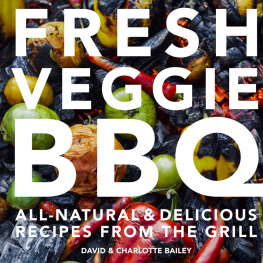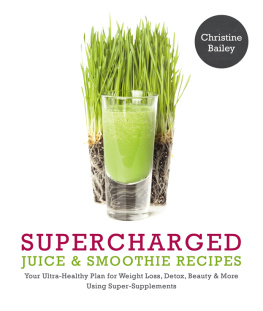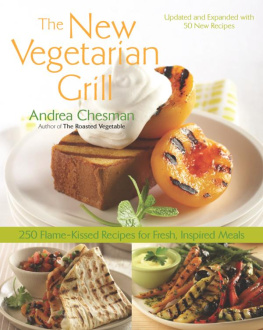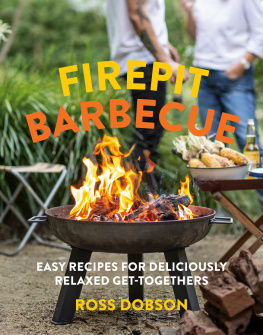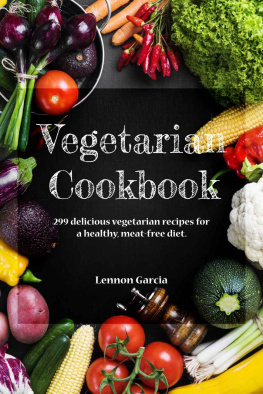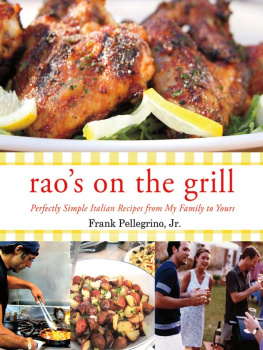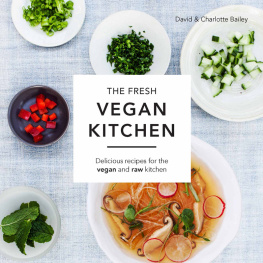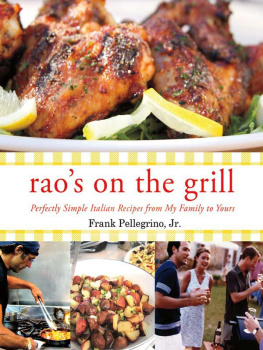Contents
Guide


CONTENTS



INTRODUCTION
Just 10 years ago, when we first fell in love with a Citron H van and ended up starting our vegetarian street food business, we could never have predicted the extraordinary explosion of plant-based eating that was to come. While weve always done fairly well, back in the early days we lost count of the number of people who thought we were very stupid to have an exclusively vegetarian truck, and time and time again we were asked if wed ever considered putting chicken in it or thought about having a meat alternative too. Happily, things have changed beyond recognition and now we can hardly keep up with how many veggie and vegan openings there are, and we hardly ever encounter somebody with a resistance to trying something because its vegetarian.
In the shops, too, a revolution has occurred. Where we once spent hours making our own mylks and experimenting with vegan cheeses or making our own meat substitutes, the shops are now full to the brim with numerous varieties of tiger nut milk and a seemingly endless array of seitan, soya or jackfruit products. There are even vegetarian butchers these days. Its wonderful!
But one area where meat still seems to dominate, and the vegetarians and vegans get a bit overlooked, is at the barbecue. And its such a shame. We love barbecues, we love fire, we love being outdoors, we agree that nothing beats that smoky taste only barbecuing can achieve. And while we do love veggie burgers and we arent quite sick to death of halloumi just yet, the world of veggie barbecues definitely needs some fresh ideas!
As mobile caterers usually to be found in the field, as the very proud tenants of a glorious allotment, and with Dave being a very keen outdoorsman who despite nearly 25 years of London living constantly yearns to recreate the open spaces and outdoor lifestyle of his South African upbringing, this has been the perfect mission for us; one that has pulled together all of our most favourite things and we really hope you enjoy what weve come up with in this, our third recipe book.
Essentially, there are two main ways to enjoy cooking outdoors. The first is the more elemental cooking on the fire pit with wood and the second is on the barbecue using charcoal (we always use natural lumpwood).
WOOD
There is something so raw and primal about fire, and there is little that creates as much atmosphere, thats as satisfying and that amplifies flavour so much as harnessing its power for cooking. The simplicity, smell and smoky woody flavour that results from this way of cooking really cant be beaten and we love to prepare meals at the fire pit at our allotment, or when were away camping, but there are a few little challenges and limitations. The first is that you do need the space, and the second is that you do also tend to need quite a lot of wood as it doesnt generally last as long as charcoal, although some companies (like London Log Company, for example) sell engineered logs that are very long lasting.
But if youre going to go for it (which we highly recommend), to build a wood fire youre first going to need something to contain it and to protect it from the weather. This will usually be some form of fire pit made from something like a large ring of stones or a metal drum or fire ring. A similar set-up will also be needed to support a grill grate, if using.
Another straightforward way, more akin to a normal barbecue, is to track down a portable log-burning stove. The Frontier Stove from Netherton Foundry is a favourite of ours.
RECIPE KEY
V = Vegan
VO = Vegan Option
WF = Wheat-free
GF = Gluten-free
To build the fire, we usually start with firelighters (we try to always use eco ones) and some kindling. When thats caught, we top it with some larger twigs and branches and when thats nicely burning too, we add the logs over the flame in a large tepee formation.
At this point, the fire will hopefully begin to blaze, and while you dont usually use that stage to cook, it is possible to work with some of the Dutch oven dishes using a tripod. Generally though, you wait for about 20 minutes until its burned down to a bed of coals (embers) that are perfect for cooking over. This should be enough for most dishes but if youre doing a recipe that needs to cook for a long time, you may need to add more logs.
Wed only recommend using hardwoods such as beech, oak, birch or sweet chestnut, as softer woods like pine are trickier to light and also contain resins that interfere with the flavour of the food. Again, the London Log Company is a great source of suitable woods and firelighters, as well as lumpwood charcoals if youre going that way instead, and all kinds of other useful things.
CHARCOAL
While we do love to use a live fire and are lucky enough to have the space at our allotment to regularly do so, there are certainly advantages to a charcoal set-up and we do, fairly frequently, turn to our Weber.
Firstly, its definitely easier and less bulky to get hold of lumpwood charcoal than it is wood, but secondly, it is also somewhat easier to control than the raging flames of a wood fire. Another plus is that the embers last much longer and you do also always have the option of recreating some of the extraordinary flavours of the live fire by soaking wood chips (we love to use oak, hickory, mesquite and maple) and then scattering them over your hot coals.
To get a barbecue going in this way, we generally place a couple of firelighters into the kettle, a good distance apart from each other. Then, with a pair of tongs, we put plenty of charcoal around each one but leaving room between them for air to circulate. We ignite the firelighters and then leave it for about 5 minutes while they in turn ignite the charcoal. When theyre ignited too, we add more charcoal and then leave that to burn for about 2030 minutes. If youve got a lid, make sure the air vents are left open. Its ready when theres no more open flame and the coals are all glowing red.

Patience is king with this and a lot of issues arise from not waiting for the coals to be hot enough or not putting enough on. But if patience is an issue (were talking about ourselves here), we highly recommend getting hold of a chimney starter. This cheap bit of kit makes life so much easier and youll have a load of burning coals ready before you even know it.
Whichever way you go, weve divided this book for ease into outdoor cooking techniques that can work either way: Dutch oven, skillet/chapa, grill/parrilla and embers and ashes, before moving on to things to prepare in advance or that are non-cook, such as salads, marinades, sauces, pickles, sides and drinks.

